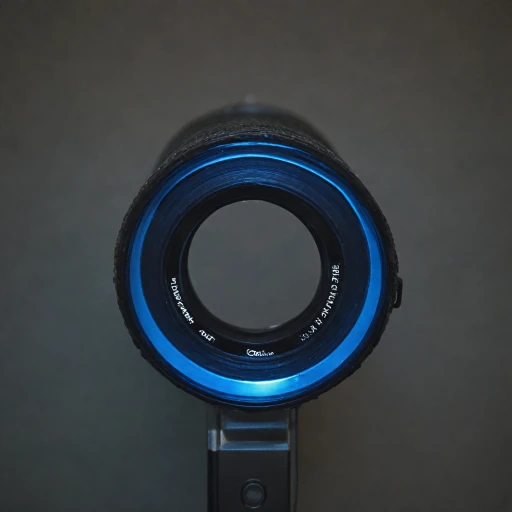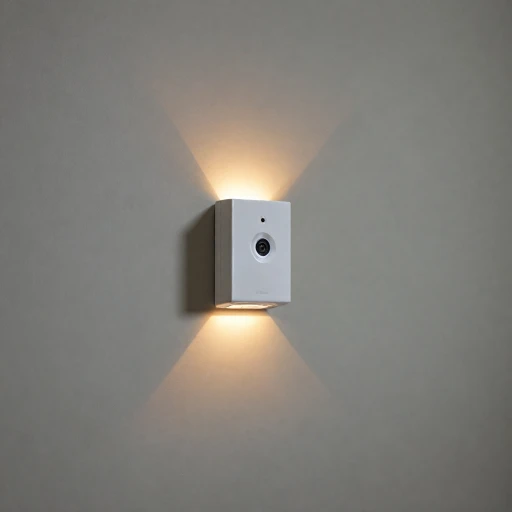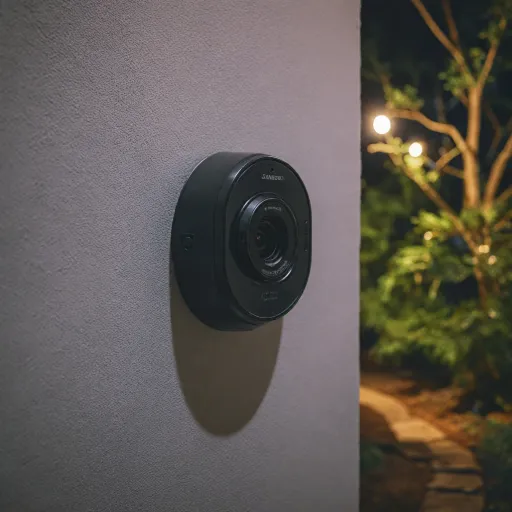
Understanding movement sensor security cameras
How motion sensor cameras work to protect your home
Motion sensor security cameras are a core part of modern home security systems. These cameras use built-in sensors to detect movement within a specific field of view. When motion is detected, the camera automatically starts recording video, sends alerts to your app, and can even trigger lights or alarms. This real-time response helps homeowners stay aware of activity around their property, whether it’s day or night.
Most sensor cameras, including popular models from Ring, SimpliSafe, and Tapo, offer both indoor security and outdoor options. Wireless and battery powered designs make installation flexible, while features like night vision and color night vision ensure clear footage even in low light conditions. Some advanced systems include floodlight cameras or solar security options for added convenience and coverage.
- Motion activated recording: Cameras only record when movement is detected, saving storage and making it easier to review events.
- Smart alerts: Get instant notifications on your phone via the app, so you can check live video or recorded clips anytime.
- Wide field view: Pan tilt and wide-angle lens options help cover more area, reducing blind spots.
- Integration with smart home systems: Many sensor cameras work with Alexa Google for voice control and automation.
Customer reviews often highlight the peace of mind that comes from knowing their security camera system is always watching for unexpected activity. Whether you’re looking for a single sensor camera or a complete security system with professional monitoring, motion detection is a must-have feature for effective home protection.
For more on how combining a porch light with your camera can further enhance your home’s security, check out this guide on enhancing home security with a porch light camera.
Key features of Ring cameras with motion detection
What Makes Ring Cameras Stand Out for Motion Detection?
Ring cameras have become a popular choice for homeowners seeking reliable security systems. Their motion detection features are at the core of what makes these cameras effective for both indoor and outdoor security. With a combination of smart sensors, wireless connectivity, and user-friendly apps, Ring offers a comprehensive approach to monitoring your property.
- Advanced Motion Sensors: Ring cameras use PIR (passive infrared) motion sensors to detect movement. This technology helps minimize false alerts by focusing on heat signatures from people, animals, or vehicles.
- Customizable Detection Zones: Users can set specific areas within the camera’s field of view to monitor for motion. This is especially useful for avoiding unnecessary notifications from passing cars or swaying trees.
- Night Vision and Color Night Options: Many Ring models feature infrared night vision, while some offer color night vision with the help of built-in lights or floodlights. This ensures clear video footage even in low-light conditions.
- Wireless and Battery Powered Models: Ring offers both wired and battery powered cameras, making installation flexible for different home layouts. Battery powered options are ideal for locations without easy access to power outlets.
- Integration with Smart Home Systems: Ring cameras work with Alexa and Google Assistant, allowing for voice control and integration with other smart devices. This enhances the overall security system and user experience.
- Mobile App Control: The Ring app lets users receive instant alerts, view live video, and adjust motion settings from anywhere. Features like motion activated recording and two-way audio add extra layers of security.
- Outdoor Durability: Outdoor Ring cameras are designed to withstand weather conditions, with models featuring floodlights or solar security options for continuous operation.
Comparing Ring to Other Security Camera Brands
When evaluating Ring cameras, it’s helpful to compare them with other brands like SimpliSafe, Tapo, and other sensor cameras. While each brand has its strengths, Ring stands out for its robust app, wide field of view, and strong customer reviews. Features such as pan tilt, professional monitoring, and integration with existing security systems are also available in select models.
Real-World Performance and Customer Feedback
Customer reviews often highlight the reliability of Ring’s motion detection, especially in battery powered and wireless models. The ability to customize detection zones and receive timely alerts is frequently praised. However, some users note that environmental factors like lighting or placement can affect motion sensor accuracy, which is addressed in troubleshooting and installation tips elsewhere in this guide.
For a deeper dive into how motion sensor cameras can enhance your home security, check out this guide on motion sensor camera benefits.
Installation tips for optimal motion detection
Best Practices for Placing Your Security Cameras
Getting the most out of your Ring camera’s motion detection starts with smart placement. For both indoor security and outdoor setups, consider these tips:
- Field of view: Position your camera to cover main entry points, driveways, or hallways. Wide-angle models offer broader coverage, but avoid pointing directly at busy streets to reduce false alerts.
- Height and angle: Mount cameras about 7-9 feet high for optimal detection. Tilt the lens slightly downward to capture faces and movement, not just the tops of heads.
- Lighting conditions: Place cameras where there’s enough ambient light for clear video. For night vision, ensure the area is free from obstructions that might block the infrared sensor. If you need extra visibility, consider models with built-in floodlight or color night vision features.
- Weather and power: For outdoor cameras, choose weather-resistant, battery powered, or solar security options. Keep wireless cameras within range of your Wi-Fi system for reliable video streaming and motion alerts.
Fine-Tuning Motion Detection Settings
Ring cameras and similar sensor cameras like Tapo or SimpliSafe offer customizable motion zones and sensitivity controls. Adjust these settings in the app to focus on high-traffic areas and reduce unwanted notifications. For example, you can set your camera to ignore passing cars but alert you to people approaching your door.
Integrating with Smart Home Systems
Many Ring security cameras work with Alexa Google smart home systems. Linking your camera system allows you to view live video feeds on compatible displays and receive motion activated alerts. Some models support pan tilt controls for a broader field view, enhancing your overall security system.
Maintaining Clear Night Vision
For reliable night vision, regularly clean your camera lens and check for spider webs or debris. If you’re curious about how infrared illuminators work in Ring cameras, this guide on infrared illuminators explains their role in delivering sharp video after dark.
Customer Reviews and Professional Monitoring
Before finalizing your installation, check customer reviews for your specific Ring model. Some users highlight the benefits of professional monitoring or the convenience of wireless, battery powered cameras. These insights can help you choose the right setup for your home security needs.
Privacy and data security considerations
How Ring Cameras Handle Your Data
When you use a Ring camera or any motion sensor security system, your video and motion data are stored either locally or in the cloud, depending on your settings. Ring cameras typically use cloud storage, which means your footage is uploaded to Ring’s secure servers. This allows you to access video clips from your app, whether you’re checking on your outdoor floodlight camera at night or reviewing motion detection alerts from your indoor security camera system.
Privacy Settings and User Control
Ring provides several privacy controls in its app. You can customize motion zones, disable audio recording, and set up privacy areas to block out parts of the camera’s field view. For wireless and battery powered models, you can also turn off motion detection or video recording entirely when you’re home. These features help balance security and privacy, especially in shared spaces or when using pan tilt cameras indoors.
Data Security and Encryption
Security is a top concern for any smart home system. Ring encrypts video data both in transit and at rest. This means your night vision footage and motion activated alerts are protected from unauthorized access. For added security, two-factor authentication is required for account access. Regular updates to the app and camera firmware also help protect against vulnerabilities.
Sharing and Integrations
Ring cameras can be integrated with other smart home devices, including Alexa Google systems. You can choose to share video clips with trusted contacts or law enforcement, but this is always optional. Customer reviews often highlight the importance of reviewing sharing settings, especially if you use professional monitoring or have multiple sensor cameras in your security system.
Comparing Privacy Across Brands
When comparing Ring to other brands like SimpliSafe or Tapo, look at how each handles privacy and data security. Some camera systems offer local storage options, while others focus on cloud-based solutions. Features like color night vision, solar security, and floodlight integration may affect how much data is collected and stored. Always review privacy policies and customer reviews before choosing a sensor camera for your home.
Comparing different Ring camera models
Ring Camera Models: What Sets Them Apart?
When choosing a Ring camera for your home security system, it’s important to compare the different models to find the best fit for your needs. Ring offers a range of cameras, each with unique features for motion detection, night vision, and smart home integration. Here’s a look at how some of the most popular Ring cameras stack up:- Ring Stick Up Cam: This versatile camera is available in both battery powered and wired versions. It’s suitable for indoor security or outdoor use, with motion activated alerts and HD video. The wireless option makes installation flexible, while the wired model offers continuous power.
- Ring Floodlight Cam: Designed for outdoor security, this camera combines motion detection with powerful floodlights. It offers color night vision, a wide field view, and a built-in siren. The floodlight feature helps deter unwanted visitors and improves video clarity at night.
- Ring Spotlight Cam: Similar to the Floodlight Cam, but with smaller, focused lights. It’s available in battery, wired, and solar security options, making it adaptable for different locations. The motion sensor triggers both the lights and video recording.
- Ring Indoor Cam: Compact and affordable, this camera is ideal for monitoring inside your home. It offers two-way audio, motion detection, and integration with the Ring app for real-time alerts.
- Ring Pan-Tilt Cam: For those who want broader coverage, this model allows you to remotely pan and tilt the camera using the app. It’s especially useful for larger spaces or when you want to track motion across a room.
Feature Comparison Table
| Model | Power Source | Motion Detection | Night Vision | Smart Integration | Field View |
|---|---|---|---|---|---|
| Stick Up Cam | Battery/Wired | Yes | Infrared | Alexa Google | 130° |
| Floodlight Cam | Wired | Advanced | Color Night | Alexa Google | 140° |
| Spotlight Cam | Battery/Wired/Solar | Advanced | Color Night | Alexa Google | 140° |
| Indoor Cam | Wired | Yes | Infrared | Alexa Google | 115° |
| Pan-Tilt Cam | Wired | Yes (with tracking) | Infrared | Alexa Google | 360° (pan) |
Other Considerations: App, Monitoring, and Reviews
Ring cameras are designed to work seamlessly with the Ring app, allowing you to view live video, receive motion alerts, and adjust settings from your phone. Many users appreciate the flexibility of wireless and battery powered models, especially for outdoor installations. For those seeking professional monitoring, Ring offers subscription plans that add another layer of security to your system. Customer reviews often highlight the ease of installation, reliability of motion detection, and the value of features like night vision and smart home compatibility. However, some users note that factors like Wi-Fi strength and placement can impact performance, so it’s worth considering these points when choosing your camera system. When comparing Ring to other brands like SimpliSafe or Tapo, Ring stands out for its broad range of sensor cameras, strong app support, and integration with Alexa Google smart home systems. Whether you need a single indoor security camera or a full outdoor security system with floodlight and color night vision, there’s likely a Ring model that fits your needs.Troubleshooting common motion detection issues
Resolving Missed or False Motion Alerts
If your Ring camera isn’t picking up movement as expected, or if you’re getting too many false alerts, start by checking the motion sensor settings in the app. Adjusting the motion sensitivity slider can help fine-tune what triggers a notification. For outdoor cameras, make sure the field of view is clear of moving branches or busy streets, as these can cause unnecessary alerts. Sometimes, repositioning the camera or using motion zones can make a big difference.Improving Night Vision and Motion Detection
Night vision and motion detection can be affected by lighting conditions. If your camera’s night vision isn’t as clear as you’d like, check for obstructions near the lens or add a compatible floodlight for better illumination. Some Ring models offer color night vision, which can enhance video clarity in low-light conditions. Battery powered cameras may reduce night vision performance to save power, so ensure your device is fully charged or consider a solar security option for consistent performance.Connectivity and App Troubleshooting
Wireless security cameras rely on a strong Wi-Fi connection. If you notice delays in motion alerts or video playback, try moving your router closer or using a Wi-Fi extender. The Ring app allows you to check signal strength and update firmware, which can resolve many issues. If the app isn’t showing the latest footage, restart your device or reinstall the app. For smart home integration, confirm your camera is properly linked with Alexa Google or other systems.Battery and Power Issues
If your camera system is battery powered, low battery can impact motion detection and video quality. Set reminders to check battery levels regularly. For outdoor cameras, solar security panels can help maintain charge. Wired cameras may need a quick check of the power source if they stop working unexpectedly.Customer Reviews and Support
Many users find that reading customer reviews can help identify common issues with specific Ring models. If troubleshooting steps don’t resolve your problem, Ring’s support team or professional monitoring services can offer additional help. For more advanced features like pan tilt or integration with other security systems, consult the official Ring support resources or community forums for guidance.- Check motion sensor and detection settings in the app
- Adjust camera placement for optimal field view
- Ensure night vision is unobstructed and consider adding light
- Maintain strong wireless connectivity
- Monitor battery or power supply regularly
- Consult customer reviews and support for persistent issues
Other brands like SimpliSafe and Tapo also offer sensor cameras and indoor security options, but troubleshooting steps are often similar across camera systems. Whether you use a smart wireless camera, motion activated floodlight, or a full security system, regular maintenance and monitoring can keep your home protected.












